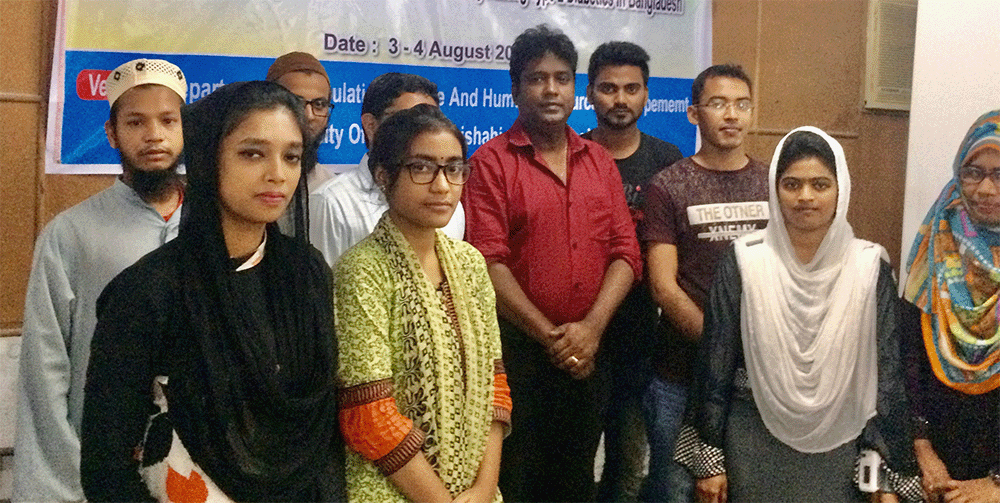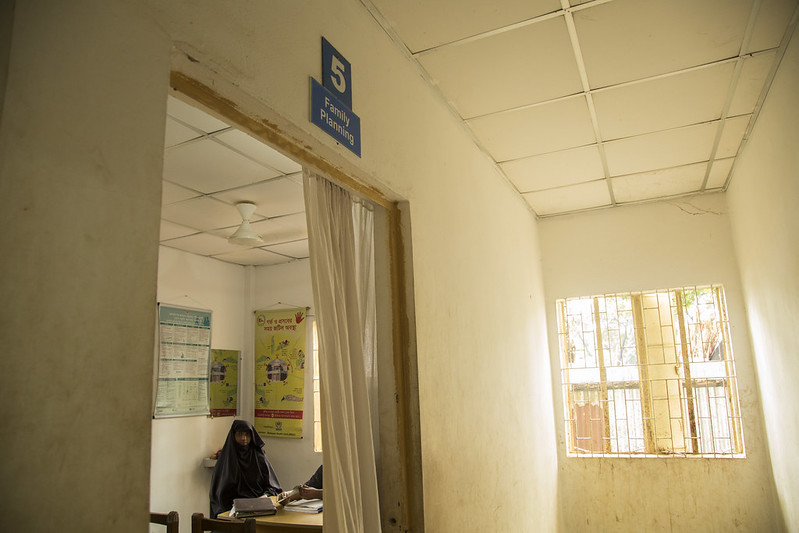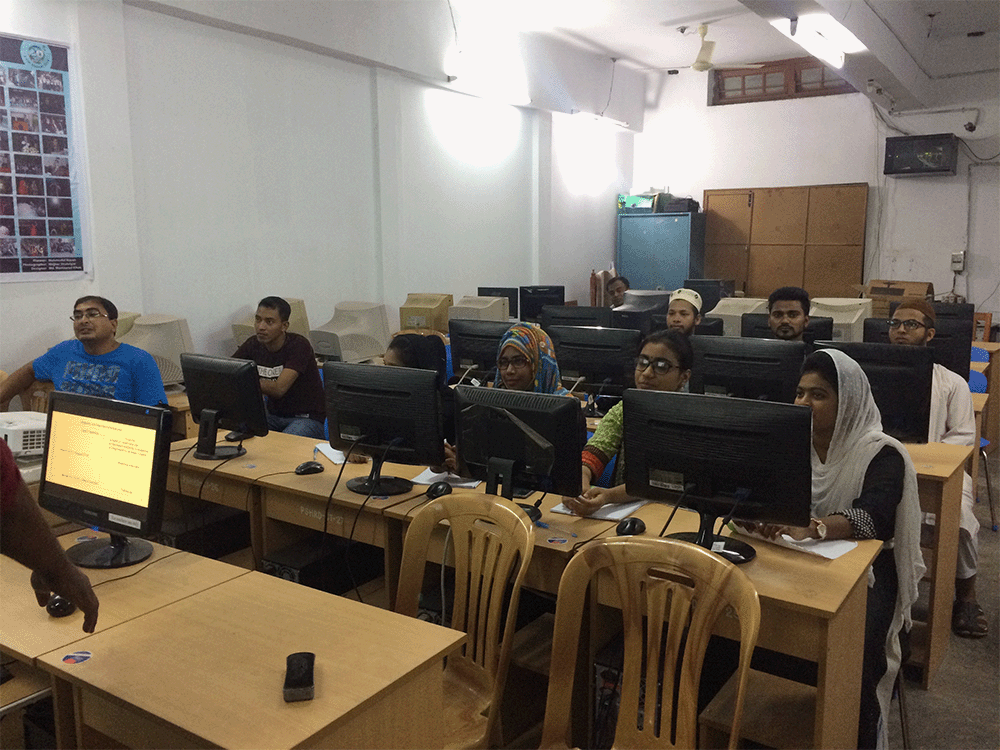What Makes a Facility “Ready” to Provide Family Planning Services? Researchers in Bangladesh Explored Similarities and Differences Across Asia and Africa

Building on the strengths of country governments, institutions, and local communities while recognizing the importance of the local leadership and ownership have been of central importance to USAID programming. The USAID-funded Data for Impact (D4I) Associate Award of MEASURE Evaluation IV, is one initiative that is a testament to the local capacity strengthening approach that appreciates the existing capacities of local actors and strengths of local systems. Introducing our new blog series that highlights local research produced with support from the D4I project, ‘Going Local: Strengthening Local Capacity in General Local Data to Solve Local FP/RH Development Challenges.’
D4I supports countries that generate strong evidence for program and policy decision making by strengthening individual and organizational capacity to conduct high-quality research. One approach to this objective is to administer a small scale grants program and collaborate with local researchers to:
- Build and strengthen research capacity among local agencies;
- Address research gaps in family planning (FP) to inform policy and programmatic decision-making; and
- Increase use of research findings by providing an opportunity for the data to be disseminated to and used by local stakeholders and decision makers.
Oftentimes, when articles are published about research they focus on the findings and the potential implications. However, if another country or program aims to implement a similar study, it is also equally important to document how they conducted the research, what was learned and what are the recommendations for others interested in doing similar research in their own context.
With this goal in mind, Knowledge SUCCESS has partnered with the D4I award program for a 4-part blog series featuring the tacit lessons and experiences of family planning and reproductive health (FP/RH) research conducted in four countries:
- Afghanistan: Analysis of 2018 Afghanistan Household Survey: Understanding Regional Variations in FP Use
- Bangladesh: Assessing the Readiness of Health Facilities for FP Services in Low-resource Settings: Insights from Nationally Representative Service Provision Assessment Surveys in 10 Countries
- Nepal: Appraisal of FP Commodities Management during the COVID-19 Crisis in Gandaki Province, Nepal
- Nigeria: Identifying Innovative Approaches to Increase Domestic Resource Mobilization and Financing Contributions for FP
In each post, Knowledge SUCCESS interviews someone on the research team of each country to highlight how the research addressed gaps in FP knowledge, how the research will contribute to improving FP programming in the country, lessons learned, and their recommendations for others interested in undergoing similar research.
Bangladesh has made remarkable progress in increasing access to FP/RH services, and the contraceptive prevalence rate (CPR) is high at 62%. Despite great progress in extending FP in the past decades, access to contraceptives is still insufficient and uneven, with continued high rates of child marriage and teenage pregnancy, as well as a lower CPR (48.9%) among young women aged 19-24 yrs than the other age groups, leading to a high fertility rate among young women. Furthermore, progress made in addressing the unmet need for FP has plateaued over the last 10 years while discontinuation rates have increased.
A research team from the Department of Population Science and Human Resource Development, University of Rajshahi, Bangladesh looked at Service Provision Assessments (SPAs), which capture data from public and private health facilities, to assess the readiness of facilities to provide FP services across 10 countries in South Asia and Sub-saharan Africa.
Knowledge SUCCESS’ Brittany Goetsch chatted recently with Dr. Mohammad Mosiur Rahman, Professor, Department of Population Science and Human Resource Development, University of Rajshahit, the principal investigator (PI) of the research team, to learn how they used secondary data sources to explore the similarities and differences in facility readiness to provide FP services across 10 countries: Afghanistan, Bangladesh, Democratic Republic of the Congo, Kenya, Malawi, Namibia, Nepal, Rwanda, Senegal, and Tanzania.

Brittany Goetsch: Can you tell us a little bit more about your work and areas of research interest?
Dr. Rahman: My name is Mohammed Mosiuri Rahman, and I’m from Bangladesh. I worked as an investigator on the USAID-funded D4I project. I’m an academic and my subject is Population Science and Human Resource Development at my university where I’m working as a professor. Because I’m a demographer, I’m interested in the whole field of FP, and especially secondary data.
Brittany Goetsch: How would you describe FP services in Bangladesh? Who or what influences this in the country?
Dr. Rahman: Although they’re [Bangladesh] trying to reduce their fertility rate, their fertility rate is still increasing. And as you may already be aware, FP is one of the important or contributing variables that can significantly lower high [fertility levels]. The population sector is where these reforms should be made in Bangladesh.
Previous research showed that certain young people’s unmet need for contraception—who do not want to have children—is a very critical issue. They don’t utilize contraception. Why don’t they utilize contraception—possibly because it’s not readily available? Why then is it not accessible? Perhaps the healthcare facilities that provide FP services are responsible. Where my interest lies is there. If we examine how prepared the FP services of the healthcare system are in different nations, this can be an important opportunity to tackle the goal of the desired total fertility rate for the governments of countries. That’s why I’m interested in this.
Brittany Goetsch: What drew you to the D4I model of research grants?
Dr. Rahman: To do high-quality research, we need some grant funding. It is impossible to collect data, analyze data, draw reliable conclusions, or carry out a successful policy level analysis without a grant. Fortunately, I noticed that the project for this funding matches my expertise [and interests].
Although secondary data are fantastic, they are typically not disclosed, examined, or merely documented, therefore funding [research utilizing secondary data] is another crucial issue that needs to be addressed.
I found that there is a good opportunity in writing this proposal because my field is heavily focused on FP. I’m interested in FP and especially this secondary data analysis part. I was inspired to apply for this grant because this grant is provided by USAID and [Data for Impact (D4I) project].
Dr. Rahman and the team selected 17 indicators recommended by the Service Availability and Readiness Assessment to assess readiness across three categories:
- Staff and guidelines (2 indicators)
- Equipment and supplies (6 indicators)
- Commodities (9 indicators)
They used 75% (12.75 indicators met) as the threshold to determine whether a facility was considered to have high or low readiness to provide FP services.
Facilities with a score of 75% or above: High readiness
Facilities with a score of 75% or below: Low readiness

Brittany Goetsch: How were the 17 indicators you included chosen and why was the threshold of 75% used to assess readiness?
Dr. Rahman: It was based on the tools recommended by the WHO’s special manual for measuring the facility scores available online. In the manual, it was recommended that you should describe some of the “subsections” in order to gauge service readiness, such as if the facility has staff and guidelines available, whether it has access to medications, and, finally, whether it has actual equipment. We added 17 indicators due to the prior suggestion of the WHO and the fact that 17 items in the survey’s data set truly fulfill the WHO’s recommendation for an assessment of service readiness. After reviewing the existing research on the subject, readiness is assessed using a 75% criterion.
Brittany Goetsch: Why were all of them given equal weight in scoring a facility’s readiness?
Dr. Rahman: Each of the 17 indicators used to evaluate a facility’s readiness for scoring is binary in nature. It implies [indicators are present or not, for instance, staff guidelines are available or not, and trained FP staff are available or not]. Due to the binary nature of all the variables, we give [them] equal weight.
Brittany Goetsch: Why was a threshold of 75% used to assess a facility’s readiness as “good?”
Dr. Rahman: When I began to analyze the data set, I read a number of prior works that looked into service readiness, a topic that includes not only FP but also prenatal care and maternity care. I learned that in some of the standard quality papers, it was stated that facilities are considered readily available if they had 75% of the indicators. You make it simpler because they [the publications] said that it is challenging for all facilities to have all items. Because having all things is extremely difficult in all facilities in impoverished countries, we can say they have the service readily available if they have at least 75% of them.
Using the SPA data, Dr. Rahman and the research team found that only 3.6% to 34.1% of facilities across the 10 countries met at least 75% of relevant items for readiness to provide FP services. Most facilities did not meet the high readiness threshold. For example, in Bangladesh, most facilities were clustered around 6 to 10 scores (6-10 indicators out of the 17 indicators evaluated, 35%-59%). Increases in the number of FP service providers and infection control measures at a facility, in particular, were associated with higher readiness scores across the 10 countries. This indication suggests that countries looking to improve facility readiness to provide FP services should focus on these two indicators.
Brittany Goetsch: How do you hope your research will be used in Bangladesh?
Dr. Rahman: In our research, we discovered that Bangladesh and other countries are both affected by the lack of [indicators for readiness for FP]. And a variety of variables contributed to this lack of readiness. We had submitted our paper to a high caliber journal with the hope that soon we would have revealed our findings there. Our findings will be valuable to other scholars conducting related work in the future. But as you are aware, just because you publish your findings in a scientific journal does not necessarily mean that they will be seen by the right decision-makers.
As a result, I contacted representatives from the Bangladeshi Ministry of Health and the Ministry of Social Affairs. I notified them about my research’s findings. So why did I act this way? I did this because we wanted our findings to be used by the government in addition to being [shared] with a global audience through this scientific journal. Therefore, I told the government about this so they could at least have a general understanding of what was happening in the nation and what should be [done] to address this issue. Based on these, I would advise other researchers to discuss their findings with the appropriate policy makers in addition to publishing them in a scientific journal.
Brittany Goetsch: How do you see program implementers using your research? Folks who are tasked with implementing program improvements or improving the provision of FP services, how do you see program implementers perhaps at the regional or local level implementing your findings?
Dr. Rahman: Our findings are really interesting and offer some insightful information. For instance, one of the key conclusions from our study is that, across all 10 countries examined, an increase in the number of FP service providers can boost the readiness of health facilities to offer FP services. This finding may imply that, despite the abundance of basic amenities in the health facilities of the countries under examination, those facilities will be unable to provide services because of a shortage of providers. The effectiveness of a health system depends on maintaining a sufficient number of health professionals to create a balance between human and physical resources.
According to our findings, it is preferable to increase the number of FP providers in the healthcare facilities in order to give the populace the right services, which I have already discussed with government health officials in my home country of Bangladesh.
In my country there is the shortage of qualified FP providers; also their retention in rural and remote health facilities is problematic. This poses a major challenge for equitable distribution and delivery of FP services. Shortages of FP providers in rural areas in Bangladesh has a profound impact on access to FP services to the large portion of people residing in rural areas. The development of evidence-based policies to enhance the hiring, deploying, and retention of qualified FP workers in the outlying and rural health facilities was a topic we explored with the health ministries in Bangladesh. The government ministries informed me that they are presently working on a variety of initiatives to boost the number of providers and promote equitable distributions.
Assessing facility readiness is useful in understanding key components of providing quality FP services to those who desire them. To mobilize resources towards cost-effective measures to increase readiness, countries can focus on critical aspects such as ensuring adequately trained service providers are present, and increasing and ensuring the quality of infection control measures. As Dr. Rahman mentions, researchers can use the team’s findings to inform their own research efforts to further understand context-specific drivers related to facility readiness to provide FP services.
To explore more resources related to this interview series, don’t miss Data for Impact (D4I)’s FP insight collection, with further reading and materials shared by their staff in Afghanistan, Bangladesh, Nepal, Nigeria, and the U.S.




